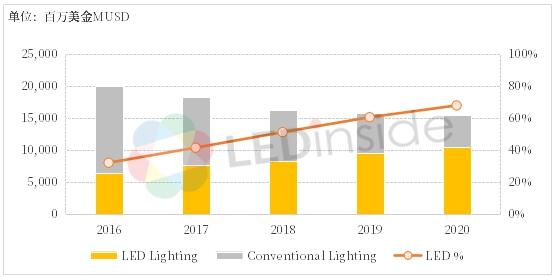At present, in the context of global economic fluctuations, the momentum of economic growth in Europe has continued to fall. The weakening of internal growth momentum, the financial risks of Italy, and the risk of Brexit in the UK have cast a shadow over the economy. The slowdown in external demand has definitely suppressed the export of Europe. In addition, the economic and trade negotiations in Europe and the United States and the geopolitical issues in the Middle East have increased the uncertainty of the economy. However, good inflation, falling unemployment, rising capacity utilization, etc., indicate that there is resilience in European economic growth, and maintaining a loose monetary policy is also conducive to maintaining economic growth. Considering the uncertainty of Sino-US trade friction and the negative impact of increased tariffs, the European market, which has relatively stable policies and lighting demand, has increasingly become the focus of lighting manufacturers.
Traditional products are accelerated and LED penetration is greatly improved
In the past, thanks to the development of traditional lighting towards LED lighting, it has brought a new wave of replacement. The European lighting industry has developed rapidly, showing a double-digit year-on-year growth rate. However, with the continuous development of the industry, the tide of European lighting replacement has passed the peak period. In addition, the development of the lighting industry is closely related to economic development. Since 2018, the European business climate has been declining and the overall market demand has slowed down. According to LEDinside statistics, the overall European lighting market in 2018 is 16.2 billion US dollars. It is estimated that the overall European lighting market in 2019 will be 15.8 billion US dollars.
Although the growth rate of demand has slowed down, the awareness of energy conservation in Europe has been rising, accelerating the elimination process of traditional lighting products, and the penetration rate of LED lighting market has been greatly improved. Beginning September 1, 2018, the ban on halogen lamps is fully effective in EU countries under Act No. 244/2009, which was passed earlier. The elimination of halogen lamps will accelerate the development of LED lighting penetration, and the scale of the European LED lighting market continues to grow. In 2018, it reached 8.292 billion US dollars, with a year-on-year growth rate of 9.5%, and the penetration rate exceeded 50%. By 2019, the penetration rate is expected to reach 60%.
European lighting market size and LED penetration rate from 2016 to 2020
Filament lamps and human-induced lighting are the mainstream trends in the market
As a region with a long history of lighting culture, the European LED lighting market has its own unique preferences and characteristics. Therefore, manufacturers want to enter the European lighting market, first of all to understand these market preferences, and then based on their own situation to carry out clear target positioning and strategy formulation.
Different from Asian countries, European light culture likes low color and high temperature, so LED filament lamps have grown significantly in recent years. European countries such as Germany, France, Denmark, and Poland imported more than 50% of the total filament lamps from China, and the growth was obvious. In addition, it can be observed that with the gradual maturity of product technology, filament lamp applications are moving from decorative products such as candle lamps and pendant lamps to high-power routes.
On the other hand, human-induced lighting is gradually becoming the mainstream trend in European lighting. On the 2025 strategic roadmap released by Lighting Europe, we can also observe the development strategy of the European lighting industry in the next decade. The European Lighting Association believes that lighting systems, better light quality, people-oriented and sustainable development are the driving forces behind the growth of the European lighting market. Human-induced lighting is currently used in commercial and home lighting areas such as offices, schools, restaurants, etc., emphasizing high-light quality and spectral proximity to natural light, and incorporating humanized intelligent control technology to meet the visual needs of human factors engineering.
Post time: Aug-14-2019

